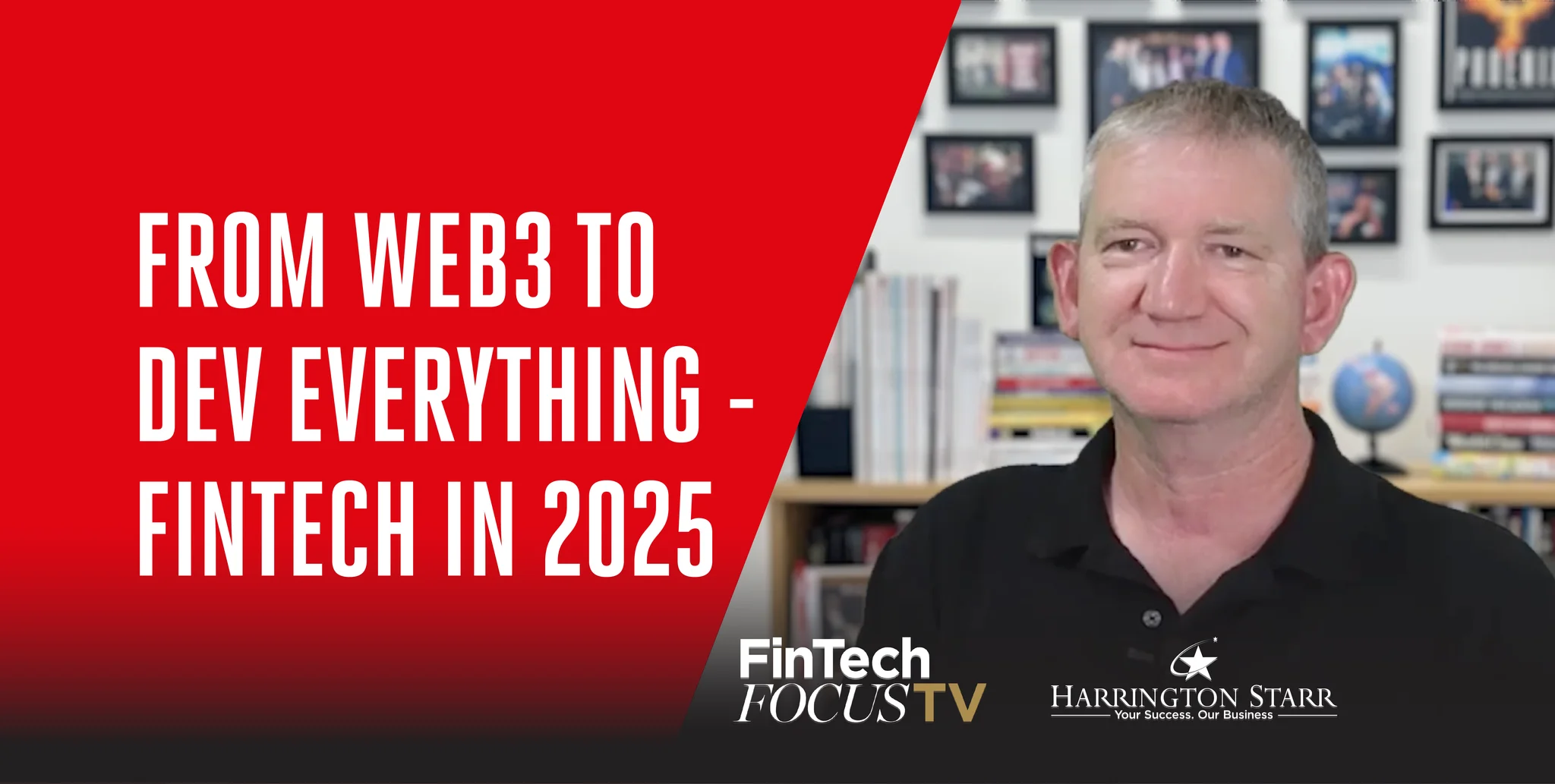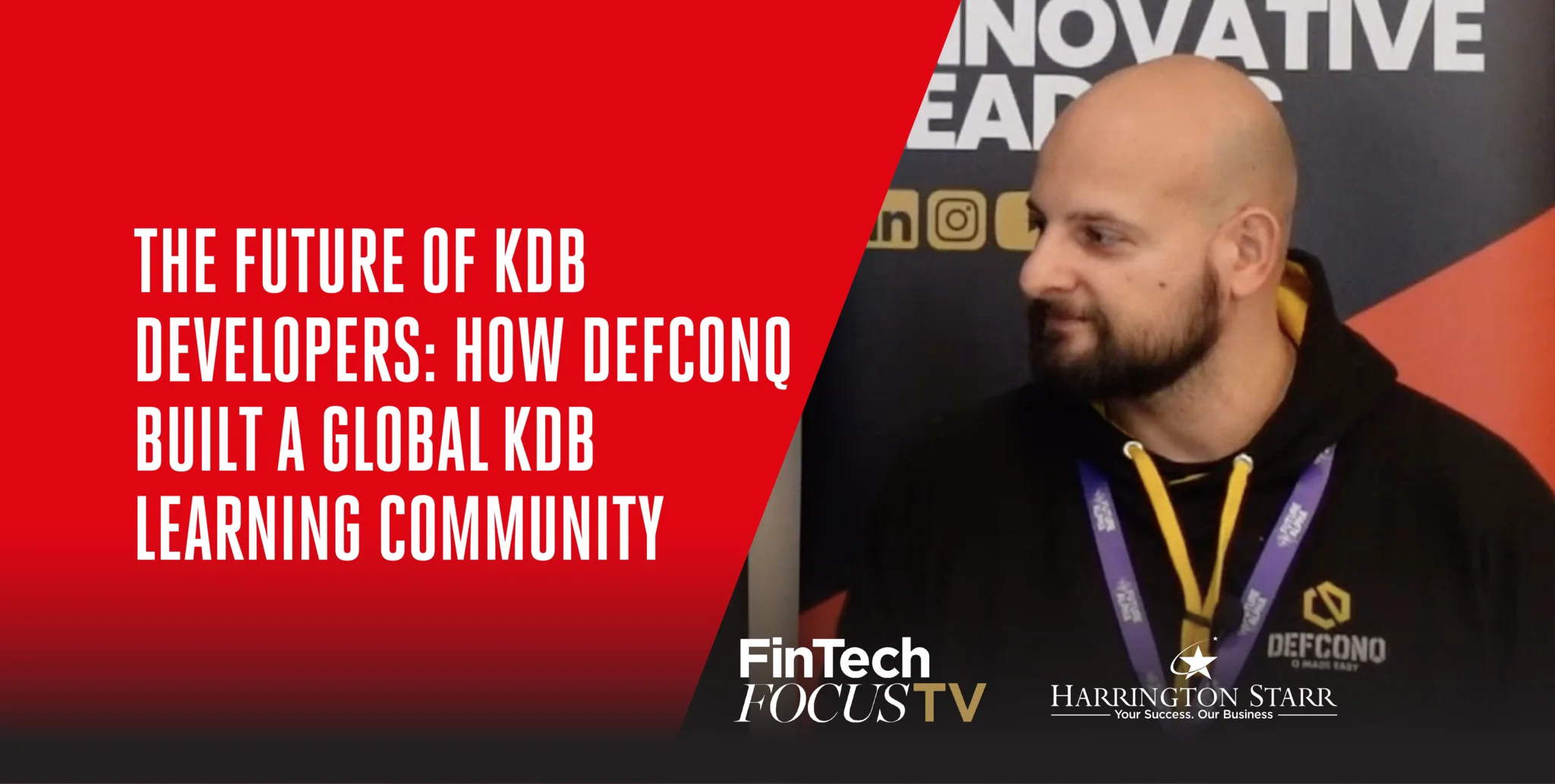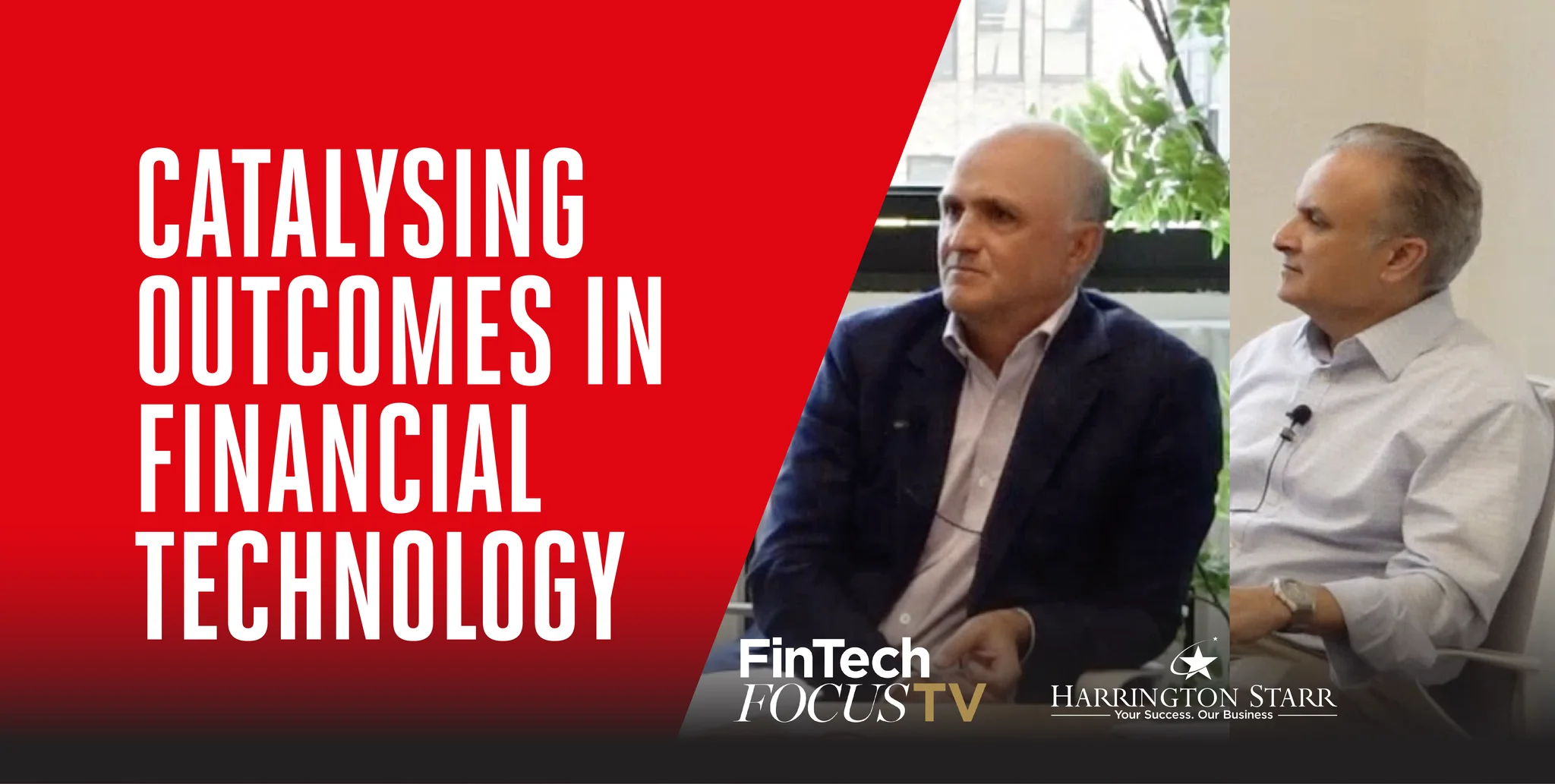A Masterclass in FinTech Innovation
In this episode of FinTech Focus TV, Toby welcomes Matt Dangerfield, Director of Financial Technology Advisors, to discuss a career spanning nearly three decades at the forefront of financial technology. From blockchain architecture to the real-world applications of Web3 and digital identity, Matt brings a unique lens to the FinTech ecosystem. With over 45 engagements delivered through his advisory firm, Matt offers real-world insight into technology transformation, leadership, and the strategic evolution of financial infrastructure.
From Banking Halls to FinTech Leadership
Matt opens the conversation by sharing his origins in the financial services sector. Beginning in 1995 with NatWest Markets, Matt built a career across various financial institutions, including Goldman Sachs, UBS, Deutsche Bank, and Bear Stearns. His transition from traditional banking to FinTech innovation took shape during his time at Fixnetix, where he eventually became CTO. There, he invented the world’s first commercially available field-programmable gate array (FPGA) for execution. This post-2008 creation led to the development of a "hedge fund in a box" and helped usher FPGA technology into mainstream adoption across Asia, Europe, and North America.
Following that success, Matt played a key role in building a blockchain solution that challenged incumbents like Triana and ICAP in the post-trade FX space. This evolved into helping build Koine, a digital custodian platform that aimed to improve the distribution of physical and virtual assets across crypto venues. Although Koine ultimately didn’t succeed, the project provided critical learnings around innovation, liquidity, and technical architecture.
Delivering 45 FinTech Engagements and Counting
As Director of Financial Technology Advisors (FTA), Matt has overseen more than 45 different engagements in the last decade, covering everything from short advisory sessions to multi-year digital transformation programmes. He and his business partner, David Grocott, bring deep technical experience into projects that demand either high-level strategic vision or hands-on architecture. From custodial work to crypto, AR/VR to back-office integrations, Matt’s project portfolio exemplifies the kind of multifaceted experience increasingly demanded in FinTech recruitment.
He describes the variety of engagements, some lasting just a few days, others up to 16 months, as a reflection of the industry’s dynamic nature. Whether it’s a front-office trading challenge or a Web3 deployment, the core remains consistent: clarity of execution, practical innovation, and scalable strategy.
The Practical Realities of Web3
The conversation moves toward the headline-grabbing world of Web3. Matt offers a balanced view: "Is there really a major difference between Web2 and Web3? Yes, there is, but no, there isn't." While the foundational technologies are similar, Web3 introduces a new modularity and flexibility that allows developers to break down monolithic architectures into nano and micro functions. This allows small firms to enter competitive spaces and large firms to remain agile with legacy infrastructure.
Web3, in Matt’s view, makes tech composable like Lego blocks. Companies can slot in modules where needed, enhancing market-specific features without rebuilding entire systems. For organisations involved in FinTech recruitment, this modularity signals a need for talent capable of adapting rapidly and contributing across various stacks.
Digital Identity and the Rise of the Sovereign Passport
One of the key innovations Web3 enables is the concept of digital identity. Matt unpacks the idea of a digital passport that enables individuals to securely store and present personal data across borders. Whether it’s for tax planning, asset holding, or cross-border transactions, this sovereign identity structure allows only relevant information to be shared for specific purposes, improving both compliance and privacy.
This has direct implications for FinTech recruitment, especially in roles tied to compliance, identity verification, and blockchain architecture. As Matt explains, digital ID systems anchored in cryptography could reshape how personal data is authenticated and accessed, impacting everything from KYC processes to transactional security.
Dev Everything: The Double-Edged Sword of Agility
Matt introduces a concept he terms "Dev Everything" to describe the all-encompassing roles developers now play within lean FinTech teams. These developers often manage not only software development but also infrastructure, cybersecurity, network provisioning, and operations. While this promotes agility and reduces time-to-market, it can lead to serious security vulnerabilities and technical debt.
Matt warns that some companies promote excellent developers into CTO roles too early, which results in organisations having technology leaders who are product-centric but lack experience in wider IT governance, scalability, and security. These companies often engage experts like Matt for fractional CTO work to stabilise their environments and prepare for investment rounds.
This resonates deeply with trends in FinTech recruitment. As firms grow and scale, the need to differentiate between product-focused developers and strategic technology leaders becomes more urgent. Identifying candidates who can evolve with the business is critical, and this is where the value of expert FinTech recruitment firms like Harrington Starr becomes most evident.
Vibe Coding and the 20/80 Paradox
Vibe coding, a term Matt uses to describe rapid MVP development without traditional QA processes, is on the rise. It's often driven by time-to-market pressure and venture funding timelines. While this approach allows quick concept validation, it often results in code that is unscalable, poorly documented, and vulnerable to security risks.
Matt estimates that many of these products are only 20% complete when launched, with 80% of the issues left unresolved. These hidden risks eventually surface, often requiring complete rewrites or significant infrastructure overhauls.
For FinTech recruitment professionals, this trend reinforces the need to place candidates who understand not just how to build quickly, but how to build well. DevOps engineers, QA specialists, and technical architects who can retrofit scalability and security into rapidly developed systems are becoming critical hires.
Maturing Crypto Infrastructure
Toby and Matt shift the discussion to digital assets and the convergence of TradFi and DeFi. Matt emphasises that crypto should be viewed simply as another asset class, albeit one that presents unique infrastructure challenges. While payments on fiat rails process quickly, blockchain settlement can be delayed, inconsistent, or costly.
Institutions increasingly expect crypto venues to deliver the same reliability and service-level guarantees as traditional exchanges. That includes market data accuracy, uptime, observability, and technical support. With the rise of more sophisticated trading algorithms and bots in crypto, traditional expectations around latency, order execution, and co-location are seeping into the digital asset world.
Matt also notes that the collapse of FTX, while damaging, accelerated the maturity of the sector by pushing compliance, regulation, and segregation of duties to the forefront. This regulatory shift is already creating a demand for professionals who understand both the compliance frameworks of TradFi and the technology of DeFi, a hybrid skillset that Harrington Starr is ideally positioned to recruit for.
Cybersecurity as a Profit Centre
Cybersecurity is one of the most talked-about areas in FinTech, and Matt’s take is that it needs to be repositioned from a cost centre to a profit centre. He argues that by monetising the data captured through cybersecurity operations, such as observability, endpoint detection, and behavioural analysis, firms can generate valuable insights that support commercial goals.
Matt provides examples from his fractional CISO work, particularly in front-office environments, where high-precision observability tools are used to detect vulnerabilities without impacting system performance. Technologies like White Rabbit enable timestamping down to the nanosecond, giving firms an edge in analysing ingress and egress traffic, pinpointing anomalies, and verifying message delivery.
This level of detail is critical in high-frequency trading environments but is increasingly relevant across the FinTech space. Recruitment in cybersecurity is therefore shifting from perimeter defence roles to roles focused on real-time analysis, anomaly detection, and business-aligned risk mitigation.
AI, Quantum, and the Next Era of FinTech
As the episode begins to wrap, Toby asks Matt what emerging technology excites him most. Matt cites the convergence of AI, quantum communication, and Web3 as the most promising frontier. He sees enormous potential in AI’s ability to act as a mentorship tool, accelerating learning without replacing human judgment.
This intersection of technologies is set to redefine how platforms are built, how data is secured, and how decisions are made. For FinTech recruitment firms, this signals a shift toward hiring candidates who are not only domain experts but also lifelong learners, people capable of evolving alongside the technology they work with.
The Role of Fractional CTOs and Strategic Consultancy
Matt closes the discussion by describing the value proposition of Financial Technology Advisors. Rather than selling hours, they offer solutions: clear assessments, deliverables, and ongoing support that scales with the client’s needs. Whether that means a one-day-a-week engagement or a quarterly review, the emphasis is on partnership, not dependency.
Matt is proud of the number of clients who return after months or even years, often during moments of transition, scaling, or funding. Their business model relies on building trust, delivering results, and helping companies achieve clarity in an often chaotic technology landscape.
This collaborative model is something Harrington Starr champions in FinTech recruitment as well. Just as Financial Technology Advisors provide fractional strategic leadership, Harrington Starr offers talent advisory services that go beyond transactional hiring. By understanding a company’s stage of growth, tech stack, and cultural values, we match them with professionals who drive long-term value.
Bridging Innovation and Execution
This episode of FinTech Focus TV is more than a conversation; it’s a playbook for scaling responsibly in the modern FinTech environment. Matt Dangerfield brings decades of experience and a nuanced understanding of both legacy infrastructure and emerging technologies. His insights offer a window into how companies can avoid common pitfalls, embrace modular innovation, and future-proof their operations.
At Harrington Starr, we know that the FinTech sector doesn’t just need more talent, it needs the right talent. Whether you’re building the next blockchain custodian, deploying AI solutions, or preparing for institutional crypto adoption, your team is your most valuable asset.
FinTech recruitment is about more than filling roles. It’s about finding the right leaders, engineers, and strategists to carry your vision forward. If you’re ready to hire the talent who will define the future of financial technology, get in touch with Harrington Starr today.






